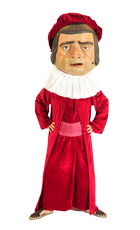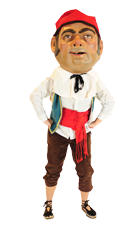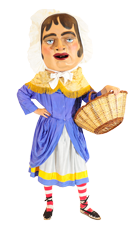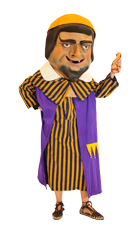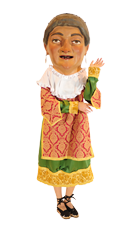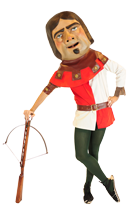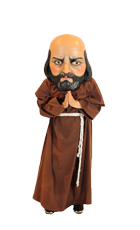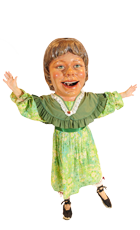
Ciutadà
The Civil Power
| Situation | Citizens Street |
| Element | Mayor's staff |
| Dance | Ball dels Capgrossos de Girona |
Citizen is connected to Citizens Street. This street, which follows the old path of the Roman Via Augusta, was one of the main streets of the city. In the past, it was named Knights Street, since it was the place in which the nobility chose to live. It was a street of large palaces and noble houses. Even today some vestiges of past opulence remain, such as the building named Golden Fountain (Fontana d’Or) and the insignias of the families Cartellà and Des Bac sculpted on the balconies of the old Hotel Italians, heraldic motifs that once surely decorated other houses along the street.
Beginning in the 15th century, the title “honored citizen” was generalized to refer to the emergent wealthy urban bourgeoisie. enjoyed the same privileges as knights, identifying themselves almost completely with the nobility. The name change from Knights Street to Citizens Street, which remains today, is good evidence for this equivalence. The “bighead” (capgròs) Citizen represents these “honored citizens.” He is a mature man, with a serious countenance, who carries a staff as a symbol of his authority. He is dressed in a long pomegranate-colored tunic called a toga (gramalla), the vestment special to the city councilmen, the highest municipal authorities. The word “juror” (jurat) derives from jurament, meaning the “solemn promise” that is made in taking on the role of city councilman. There were four magistrates equivalent to those who nowadays are the mayor and his lieutenants. The figure of the city councilmen (jurats) was superceded as a result of the local administrative reform imposed by Philip V with the decree of the New Plan (Nova Planta) in 1716.






